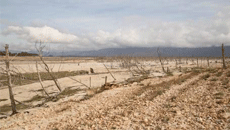
The next three to four weeks will determine the final outcome of the harvest in the Swartland as the season has generally started off later than normal. The grain crops have been adversely affected by heat over the past 10 days and can be even further affected by the poor rain prospects. Grains in the Swartland is succumbing to the drought and heat conditions daily. The average yield potential is being estimated at ±40% of the average and less to no yields in drier parts. The further north the weaker the crops appear.
The temperature and rainfall of the next two weeks will determine whether Middel-Swartland will obtain poor to average yields and the Southern-Swartland average yields. In the northern parts of the Swartland, weak to no harvests can realise, even with rain during September. Although September has another week remaining, rainfall is currently the lowest since 1959 (Jan to Sep measured on farm in the Malmesbury-district).
Planted at a different time, the Canola can be regarded as average to poor. In general, plant conditions were not good and different areas have different potential.
Producers have cut their grain for feed or are using for grazing, rather than risking harvesting nothing. Grazing will further struggle without good rains before the end of November.
In general, the current season's harvest cannot be expected to be like last year, as the chance of this has passed. There is even talk of whether producers would be able to obtain 2015's poor yields.
Last week's 15-20mm rain that occurred in Western- and Southern Rûens were worth it’s weight in gold, with this area still having an average yield potential as a result. The pastures are under pressure, which means producers are still feeding their animals. Wean lambs are rounded off as quickly as possible. Meat and wool prices are however still favourable and feed affordable.
The grain picture in Eastern Ruins was transformed during August and September due to regular rainfall; especially the last weekend's 15 to 25 mm rain in most of the areas. Certain parts closer to George and Mosselbay received even more rain than mentioned above. Although grains are still young, harvest outlooks are considerably more favourable than a month ago. An average harvest for this area can generally be obtained, even with some areas appearing better and some worse.